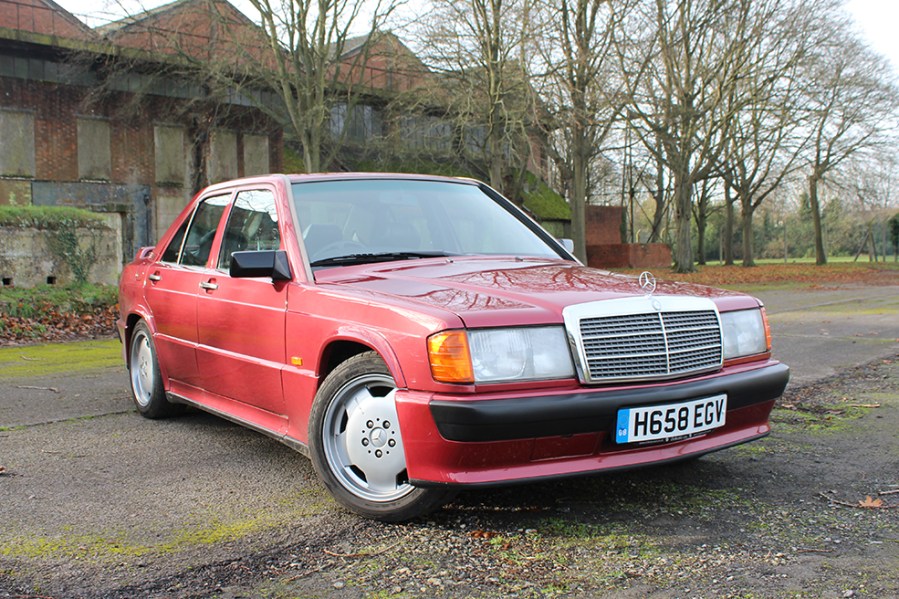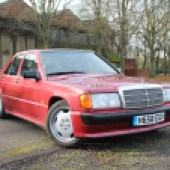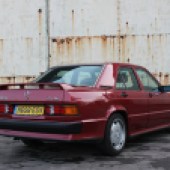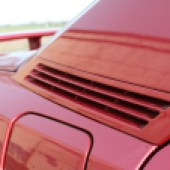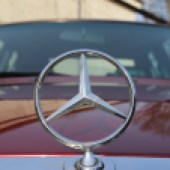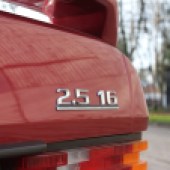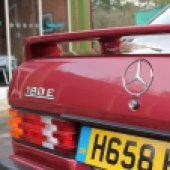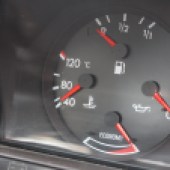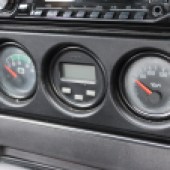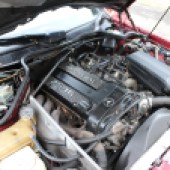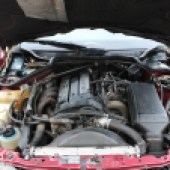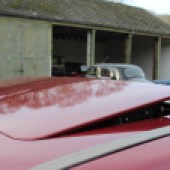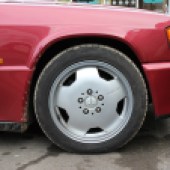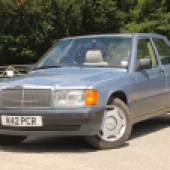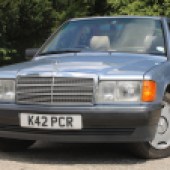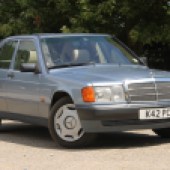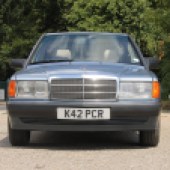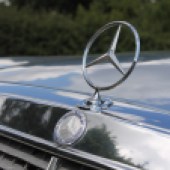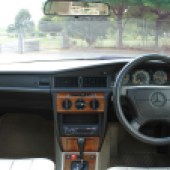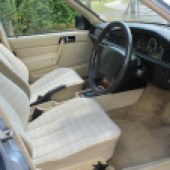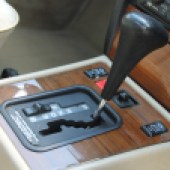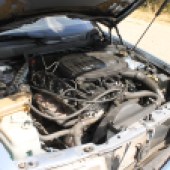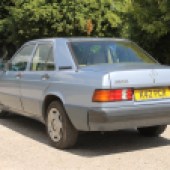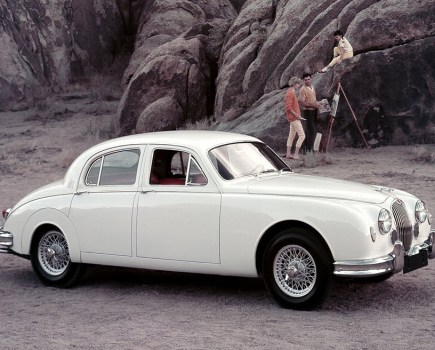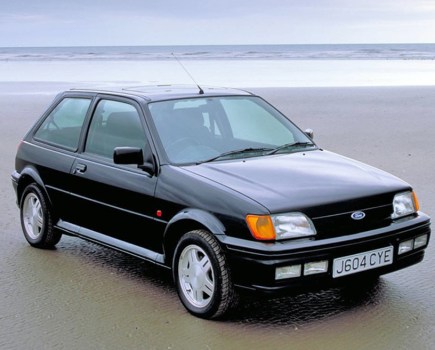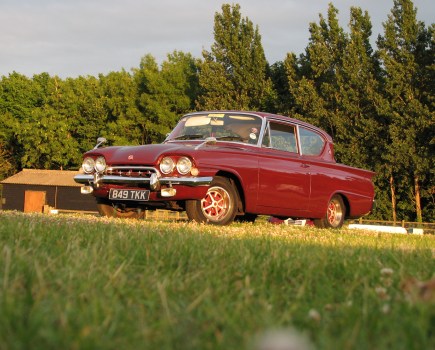An enticing mixture of solid build and modern engineering, the Mercedes 190E range has something for everyone. Here’s how to buy a great one
Words: Sam Skelton
The Mercedes 190E was the German marque’s first foray into the small saloon sector, but it was far from a flash in the pan. Development took almost a decade, with £600 million invested in refining the design before it launched in 1982. Sharing the 2.0-litre engine from the entry-level W123 in both carburettor and injection forms, the new model adopted the 190 and 190E badges to signify its position below the existing 200 in the range. From September 1983, the Mercedes 190E was exported to the UK, priced to rival the 320i and 323i from BMW’s E30 series.
By 1985, Britain received its first new engine – a 2.6-litre six-cylinder unit also used in the larger W124 260E. The Mercedes 190E 2.6 went head-to-head with the BMW 325i, delivering a blend of comfort and performance in a compact package. There was also a naturally aspirated five-cylinder diesel – the 190D 2.5 – which gained a strong reputation for reliability and economy, even if it lacked outright speed.
In 1990, Mercedes replaced the carburettor 190 with a smaller injected engine in the 190E 1.8. At the performance end, BMW’s M3 faced competition from the 190E 2.3-16 and later the 2.5-16, developed in collaboration with Cosworth. Mercedes 190E production ended in 1993 after 1.8 million units had been built, with the model succeeded by the C-Class (W202).
Mercedes 190E values
190E values vary widely depending on condition, mileage and specification. Project cars with worn bodywork or mechanical issues can be found for under £1000, and can be great value use-and-improve classics if you buy wisely. Standard, tidy examples typically span £4000-£10,000, while well-preserved low-mileage cars command more, often north of £12,000. The Cosworth 2.3-16 and 2.5-16 models are the most sought-after, with prices easily reaching £40,000 for excellent, original examples. Collectors favour unmodified cars, correct interior trim and full service history.
Insurance Costs
1989 Mercedes 190E 2.6, £5000 value
Example quote: £132.92 or £150.92 with Agreed Value.
Quotation supplied by Lancaster Insurance. Tel: 01480 400761
Quote based on a 45-year-old marketing manager, access to another car, no claims or convictions, club member, 3000 miles per year, no modifications, living in SP2 0HL. Disclaimer: Subject to underwriting criteria. An additional charge may be payable. Authorised and regulated by the Financial Conduct Authority.
Bodywork
As an older Mercedes, any 190E will suffer from rust – but equally, because the trouble spots on the 190E are well documented, there’s a good chance many will already have been treated. There’s a notorious rust trap just ahead of the front wheel arch that can lead to wing rot, while drooping front bumpers may point to similar issues; if possible, reach behind the panel and feel for corrosion. That said, brand new front wings and repair panels are plentiful and affordable; a pattern wing can be had for £60-£90 brand new, while a rear arch repair panel is just £75. Rear subframe mounts are also prone to rust and should be inspected.
Check the jacking points, especially on later models with plastic lower cladding, as well as the bottoms of the doors. Likewise, inspect the floors if there’s any underseal, as trapped moisture can, in extreme cases, rot the metal behind it.
Unlike the W124, which shares its underpinnings with the 190E, there was only one body style – if you wanted a convertible or estate, you were out of luck.
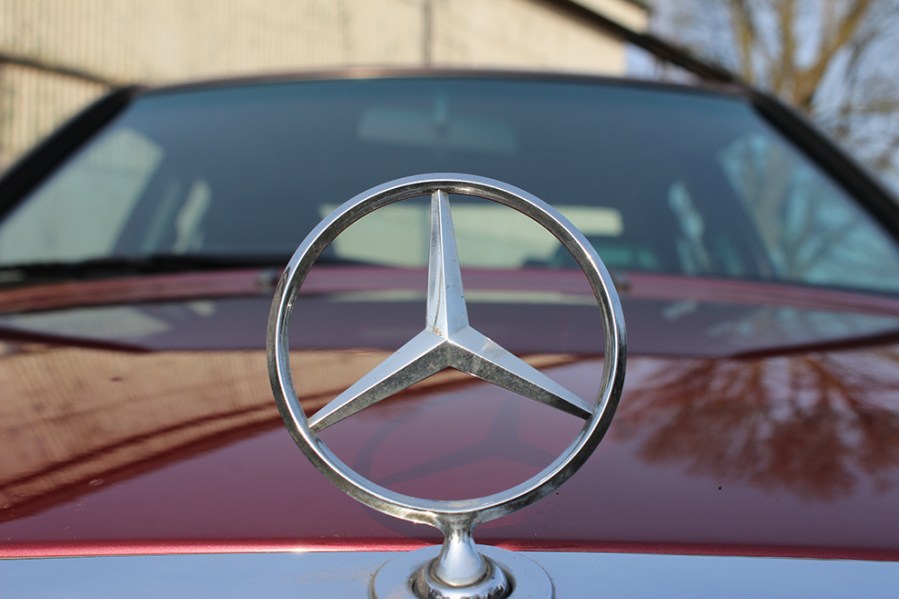
Engine and transmission
For petrol power, there are two engine families – the M102 four-cylinder and M103 six-cylinder, the latter fitted to the 190E 2.6. While 1990s Mercedes have a reputation for biodegradable wiring loom problems, the good news is these generally affected the next generation of engines, so no 190E should suffer from this. All of these engines – apart from the Cosworth – have two valves per cylinder and are well known for their durability. Four-cylinder models require a timing chain replacement at roughly 60,000 miles, while six-cylinder examples can be prone to oil leaks. It’s also worth checking evidence of basic maintenance, such as the condition of the HT leads and the cleanliness of the oil. A recent service can conceal as much as it reveals, so a car that shows some use but has been regularly maintained is arguably the safer choice.
Diesel models are similarly robust, although many have by now been run into the ground as taxis or exported abroad. They do exist, but due to their rarity you can expect to pay a premium over a 1.8 or 2.0 petrol, and driving one is generally less engaging.
Most Mercedes 190Es are automatic – and for good reason. It’s not that the manual is inherently poor, but the shift feel isn’t as refined as buyers expect, and the market tends to assume a Mercedes should be automatic. The manual is not unreliable or delicate, just less desirable – particularly given Mercedes’ long-standing expertise in automatic transmission design.
The four-speed automatic fitted to all 190 models has two modes – Standard and Economy – never ‘Sport’, despite what some sellers might claim. In Standard, the gearbox usually starts in second unless accelerating hard, so don’t be surprised if you only notice three shifts during a test drive. From a gentle rolling start, it will drop into first without issue. In Economy, it always starts in second to maximise fuel efficiency. Check the transmission fluid colour: red is healthy, brown indicates it needs changing, and black suggests serious internal issues, in which case walk away. Shift points can be adjusted via the Bowden cable, so if the car seems to shift too early or late, this can usually be corrected.
Suspension, steering and brakes
The coil springs and separate shock absorbers are shared with the later, larger W124 model – a car that beneath the surface shares many components with the Mercedes 190E. Similarly, the multi-link rear suspension will be familiar to anyone used to Mercedes from the late 1980s and 1990s. There’s nothing particularly tricky to manage here, so a quick inspection should suffice. Check the steering for both free play and excessive stiffness – either could point to issues with the steering box that would need further investigation.
The braking system is straightforward and should not present any major concerns. These are servo-assisted discs on all four corners. Unlike many Mercedes of the era, the 190E used a conventional central lever for the handbrake. For those unfamiliar with Mercedes, this is generally easier to live with than the foot- or dashboard-operated systems found on its contemporaries.
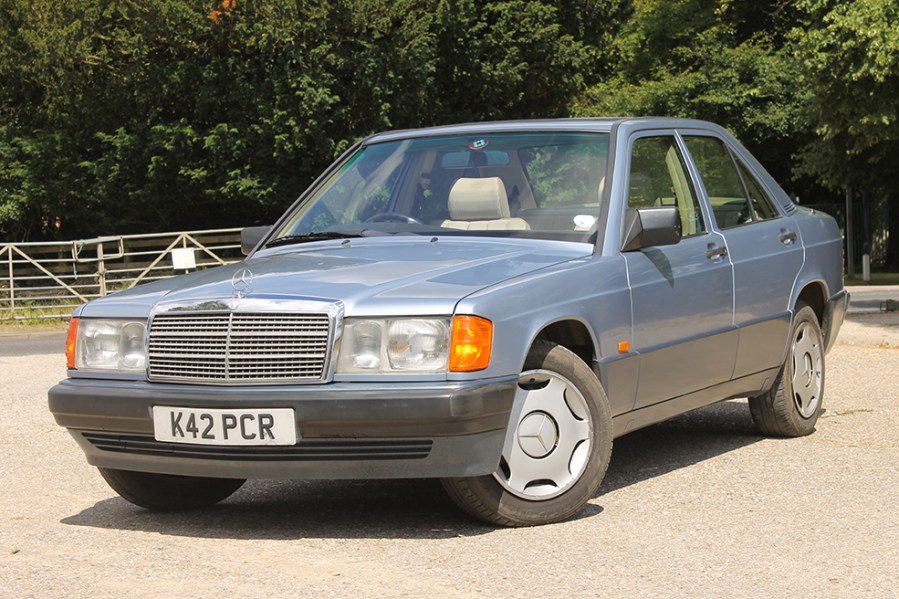
Interior and trim
There are four main interior materials to choose from – cloth is the most common, though velour was a seldom-specified option in the early models. For those after a more durable trim, MB-Tex vinyl was available and has gained a reputation as one of the toughest interior materials in motoring, while buyers seeking a touch of luxury could opt for leather.
Sportline-equipped cars, including Cosworth variants, featured a distinctive cloth material; Cosworth models also benefitted from a contoured rear seat. In standard models, leather is generally regarded as the most desirable and therefore the best choice if considering future resale. Many cars feature grey or cream trim – while more unusual colours exist, these rarer shades are harder to source should any replacement trim be required later.
It is also worth noting that air conditioning was rarely specified but remains a desirable option, capable of boosting the value of any 190E by 10-20 per cent if fitted and in working order.
Mercedes 190E: our verdict
While the 190E was the brand’s first venture into a smaller saloon, that doesn’t make it any less capable. Not only does it provide one of the most affordable entry points into classic Mercedes ownership, but the 190E feels every bit as solid and durable as a W123 or W126. Given that most are now over 30 years old, corrosion is almost inevitable, but it’s rarely beyond repair, and good examples can still be found if you look carefully. It appeals to a wide range of buyers too, from the purist 190 to the fully equipped 2.6, much like the project car we ran a few years back.
It’s worth noting that there are Mercedes-Benz VIN decoders available online, where you can input a VIN to obtain the car’s original build sheet. This will detail any factory-fitted options, such as provision for a radio, alloy wheels, a larger fuel tank, or air conditioning. Many of these cars have had trim, wheels, or even more substantial upgrades replaced over the years, so knowing how a car left the factory can be invaluable when negotiating a price. The build sheet will also help you gauge originality and act as a useful reference if you’re looking to restore a modified example. Buy wisely, and a well-maintained Mercedes 190E could easily outlast you.
Model Timeline
1979
Development of W201 begins, to compete with BMW 3 Series.
1982
W201 (190E) launches at Paris Motor Show; petrol 2.0- and 2.3-litre engines available.
1983
Sales start in Europe and North America; diesel versions introduced.
1984
Cosworth-tuned 2.3-16 with 16-valve engine launched for DTM racing homologation.
1986
Even more powerful 190E Cosworth 2.5-16 introduced; climate control and air conditioning options added.
1988
Minor facelift brings new bumpers and trim updates.
1990
2.6-litre straight-six engine introduced as BMW-rivalling range-topper.
1993
C-Class W202 begins to replace W201; production continues in some markets.
1994
W201 production ends after over 1.8 million units built.

